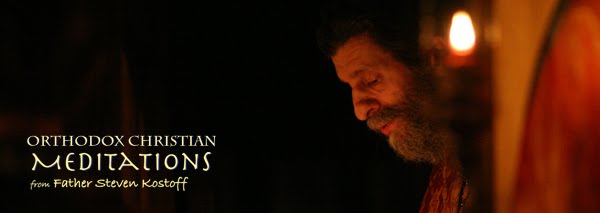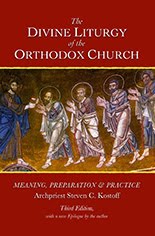Dear Parish Faithful,
I was gathering some more information so as to write a reflection/opinion on the recent controversy in Russia generated by the female singing group with the unfortunate name of “Pussy Riot” (wince). As you probably know, these three women were recently sentenced to two years in prison for their “protest song and dance” inside the Cathedral of Christ the Savior in Moscow. They were arrested, tried and convicted of “hooliganism and blasphemy.” However, as I was trying to gather some more background information, someone sent me the following article written by Frederica Mathewes-Green, the prolific Orthodox author who always has something interesting and insightful to say about her chosen topics. She has one particular approach to this event, and that is to offer a brief historical sketch that will allow to bring some context to this controversial “performance” inside of a church. That context is very helpful because it allows us to understand the offensiveness of how the women chose to protest the rule of Vladimir Putin, and even the newly-established relationship between the government and the Russian Orthodox Church. For the moment, then, we can all read Frederica Mathewes-Green’s article.
Personally, I wish that the women chose a different forum for their protest – even outside in front of the church would have been more appropriate for a public demonstration against the government. Be that as it may, I fully agree with Mathewes-Green’s opinion that the women should not have received a prison sentence as punishment. All things considered, I believe that that was far too harsh. Community service of some sort – directly related to the Church? – would have been much more appropriate, I believe. At least, though not until after the sentencing by the judge if I am not mistaken, the Church issued an official statement asking for mercy from the civil authorities. Perhaps the Church was hoping that the judicial system would commute the sentence when all was said and done.
I haven’t read anything about the case for a couple of days now, so if you have any more information that would update or correct my brief comments above, please share them with me.
Fr. Steven
_____
The Original post can be found
here.
History, Blasphemy, and Russia
Wednesday, August 22, 2012
Frederica in Arts, Orthodoxy, The Culture
[August 22, 2012]
When the “Pussy Riot” protesters were sentenced last week for their performance in Christ the Savior Cathedral in Moscow, a friend asked me why Orthodox Christians were so upset about what they’d done. For him, this was clearly a political protest. It was aimed at a too-close entwining of church and state, so it took place in a church. What’s the big deal?
But, in practice, there’s a difference. If you protest at a government building, you impact people in that government. If you protest at a business, you impact people in that business. But when you protest at a church, you don’t hit only those in power. You hit all the ordinary people, too, the ones who don’t have any influence or power. They come to church on a weekday afternoon just to pray, because they’re worried or sad about something. When someone mocks their faith it wounds them. It wounds their fellow-believers all over the world, who have no connection at all to the target of the protest.
What caused this pain was that the women sang a song that contained obscenities and a parody of a prayer. Those on the outside might not get why it was so hurtful. Well, for one thing, the altar in an Orthodox church is felt to be especially holy; it’s not like the stage of a church auditorium. Because Christianity grew out of Judaism, the altar is like the Holy of Holies in the ancient Temple.
But the form of the protest, a mocking and obscene prayer, also hit on particular, and painful, memories. My spiritual father, Fr. George Calciu, spent 21 years in communist prison. (He died in 2006). He was subjected to the brainwashing process, and they used both physical and emotional torture. They mocked everything and everyone he loved—his wife, his child, his faith. A centerpiece of the brainwashing program was to subject prisoners to parody church services, with obscene and mocking prayers.
All Christian prisoners endured this abuse. Millions of clergy, monastics, and lay people died for their beliefs. Fr. George survived, and, thanks to the efforts of Romanian expatriates like Eugene Ionescu and Mircea Eliade, he was freed in 1984.
It’s not that long ago.
The problem was the mockery of our prayers, not the protest against Putin and the official church. There are many Christians who share these women’s concerns, and our faith has a long history of prayer for deliverance from unjust rulers. A sincere prayer might have had an entirely different effect; it might have attracted allies everywhere. Sincerity is always better than mockery.
Also, the church where this happened has a sensitive history. The original Christ the Savior Cathedral was built in the 19th century, modeled on the finest Byzantine architecture and filled with treasures of art and iconography. In 1931, the Soviets destroyed it—they blew it up. You can see the footage
online. Artworks were thrown in a pile and burned—destroyed specifically because of their religious content, like the Buddha statues dynamited in Afghanistan.
But in the 1990’s there grew up a popular movement to rebuild the Cathedral. A million citizens of Moscow donated to the fund. The new cathedral is identical to the one that was destroyed. So this church has a significant story: it was destroyed by the powerful, and rebuilt by the people.
The new cathedral was consecrated in 2000. It’s not that long ago.
What’s the right punishment in such a case? We could try picturing analogous incidents, imagining protesters invading a mosque or a synagogue and chanting obscene parodies of the worshippers’ prayers. But I don’t know that there’s a need for punishment. Community service would be better. These women could use their talents to gather and tell the stories of those who lived through the bad times, and the stories of those who did not make it through. That would be something we could all agree on—a project that could bring healing and understanding, and strengthen memory against future abuse.
When you’re young and strong, like these women are, it can be hard to imagine that anyone was ever weak, or suffering, or persecuted, or afraid. You might think, “It can’t happen here.” But it did happen—right there. And not that long ago. We know this from history: if you forget the times when the faithful were mocked with abusive and obscene words, it won’t be long before we’re hearing those words again.
Source.










